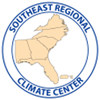- Data and Products
- Weather & Climate
- CRONOS Database
- Climate Thresholds
- Holiday Climatology
- Winter Storm Database
- Ask a Meteorologist Database
- Climate Division Data
- Climate Normals
- CRONOS API
- CRONOS Review
- Daily Normals Temperature Tool
- Data Request Form
- Environmental Modeling
- Evapotranspiration
- Heat Index Climatology
- Hurricanes Database
- NCDC Storm Events Database
- Open Water Evaporation
- Precipitation Estimates
- Storm Reports Portal
- Sunrise / Sunset Times
- Weather Extremes
- Wind Rose
- Water Resources
- Agriculture
- Forestry
- NC ECONet
- Data Request Form
- All Products
- Weather & Climate
- Aspects of NC Climate
- Educational Outreach
- About Our Office

State Climate Office of North Carolina
Email: sco@climate.ncsu.edu
Phone: 919-515-3056
Phone: 919-515-3056
High Winds
| Thunderstorms | Hail | High Winds | Tornadoes | Lightning |
| Hail by the Numbers | High Winds by the Numbers | Tornadoes by the Numbers |
Aside from landfalling tropical systems, North Carolina is affected by many other types of damaging wind events, such as severe thunderstorms, remnant tropical systems, and other large scale wind events associated with extratropical systems. Severe thunderstorms, which produce wind gusts of at least 58 mph, occur most frequently during spring and summer, but can occur any time of year. They are produced in a variety of circumstances, including along frontal boundaries, in weakening tropical systems, and during intense afternoon heat and humidity.
The remnants of tropical systems, usually originating from the Gulf of Mexico or the coastline south of North Carolina, are those which have already made landfall but continue to track inland. Occurring mostly in the late summer and early fall, they often still contain strong winds and can produce severe thunderstorms. Wind events from extratropical systems occur most frequently from nor’easters and near strong frontal boundaries.
Below is the Beaufort wind scale to describe the effects of various wind speeds.
| Force | Wind Speed (mph) | Description | Appearance on Water | Appearance on Land |
| 0 | 0-1 | Calm | Sea like a mirror | calm; smokes rises vertically |
| 1 | 1-3 | Light Air | Ripples with the appearance of scales are formed, without foam crests | direction of wind shown by smoke but not by wind vanes |
| 2 | 4-7 | Light Breeze | Small wavelets, still short, but more pronounced; crests have a glassy appearance but do not break | wind felt on face; leaves rustle; wind vane moves |
| 3 | 8-12 | Gentle Breeze | Large wavelets; crests begin to break; foam of glassy appearance, perhaps scattered white horses (white caps) | leaves and small twigs in constant motion; wind extends light flag |
| 4 | 13-18 | Moderate Breeze | Small waves, becoming longer; fairly frequent white horses | wind raises dust and loose paper; small branches move |
| 5 | 19-24 | Fresh Breeze | Moderate waves, taking a more pronounced long form; many white horses are formed (chance of some spray) | small-leaved trees begin to sway; crested wavelets form on inland waters |
| 6 | 25-31 | Strong Breeze | Large waves begin to form; the white foam crests are more extensive everywhere (probably some spray) | large branches move; overhead wires whistle; umbrellas difficult to control |
| 7 | 32-38 | Near Gale | Sea heaps up and white foam from breaking waves begins to be blown in streaks along the direction of the wind | whole trees sway; walking against wind is difficult |
| 8 | 39-46 | Gale | Moderately high waves of greater length; edges of crests begin to break into the spindrift; the foam is blown in well-marked streaks along the direction of the wind | twigs break off trees; moving cars veer |
| 9 | 47-54 | Strong Gale | High waves and dense streaks of foam along the direction of the wind; crests of waves begin to topple, tumble, and roll over; spray may affect visibility | slight structural damage occurs; shingles may blow away |
| 10 | 55-63 | Storm | Very high waves with long overhanging crests; the resulting foam, in great patches, is blown in dense white streaks along the direction of the wind; on the whole, the sea surface takes a white appearance; the tumbling of the sea becomes heavy and shock-like; visibility affected | trees uprooted; considerable structural damage occurs |
| 11 | 64-73 | Violent Storm | Exceptionally high waves (small and medium size ships might be lost to view for a time behind the waves); the sea is completely covered with long white patches of foam lying along the direction of the wind; everywhere the edges of the wave crests are blown into froth; visibility affected | widespread damage occurs |
| 12 | 74+ | Hurricane | The air is filled with foam and spray; sea completely white with driving spray; visibility very seriously affected | widespread damage occurs |


